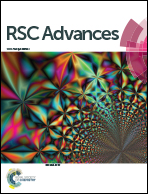Optical temperature sensing in β-NaLuF4:Yb3+/Er3+/Tm3+ based on thermal, quasi-thermal and non-thermal coupling levels
Abstract
Three methods for optical temperature sensing are investigated in the NaLuF4:Yb3+/Er3+/Tm3+ phosphor, which is prepared by a hydrothermal method. The temperature-dependent luminescence is investigated under 980 nm excitation. Utilizing fluorescence intensity ratio (FIR) technique, the temperature sensing behaviors are studied in the range of 300–600 K based on thermal coupling levels (2H11/2 and 4S3/2 of Er3+), “quasi-thermal coupling levels” (4F7/2 of Er3+ and 3F2 of Tm3+) and non-thermal coupling levels (1D2 and 1G4 of Tm3+), respectively. The maximum sensitivity is 604 × 10−4 K−1 at 300 K, which is based on non-thermal coupling levels of Tm3+. Meanwhile, the temperature dependent emission colors are discussed, which are changed from bluish green to light blue with the temperature rising. These significant results, high sensitivity and the temperature dependent multicolor emissions, indicate that the NaLuF4:Yb3+/Er3+/Tm3+ phosphor is robust for optical temperature sensing.


 Please wait while we load your content...
Please wait while we load your content...